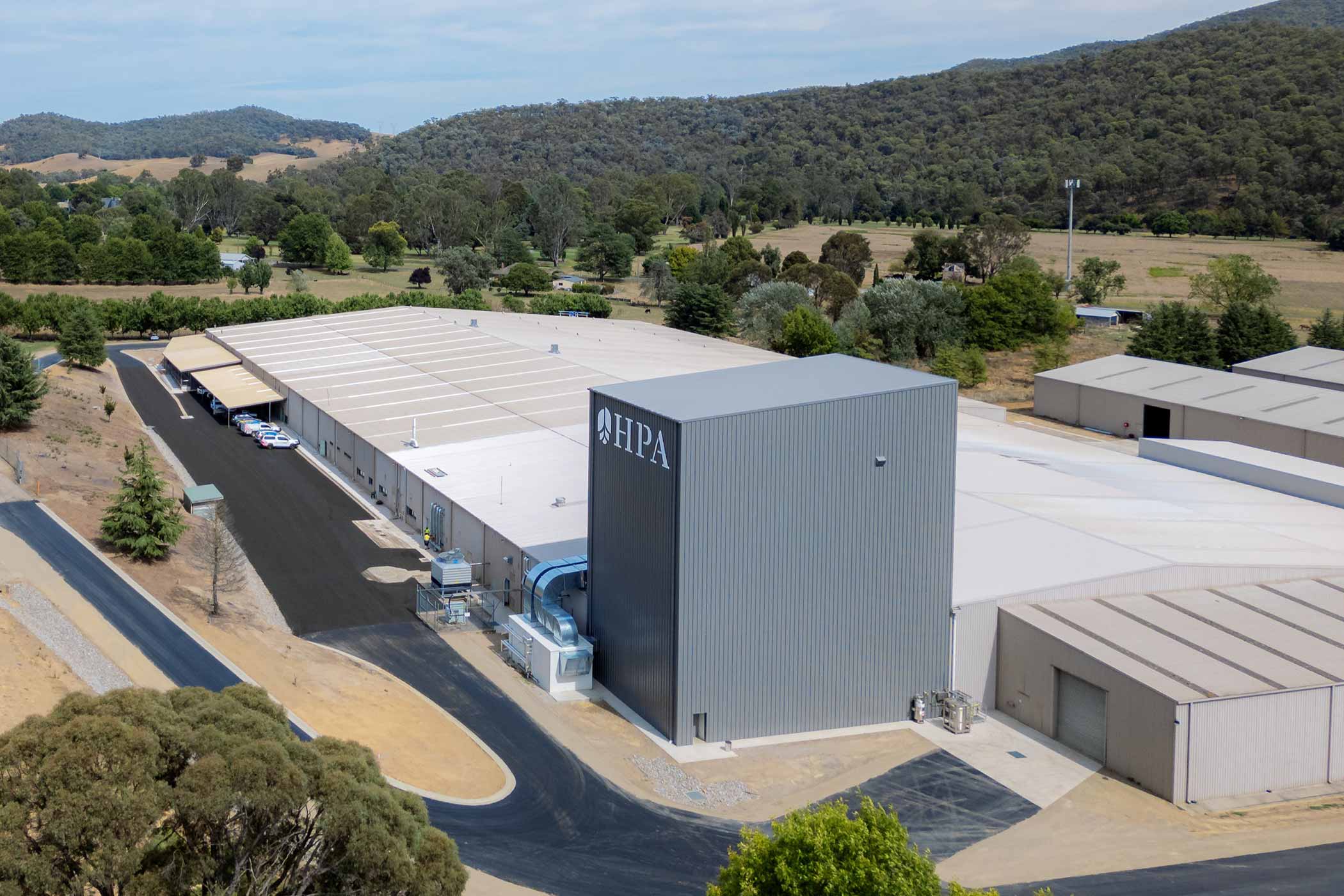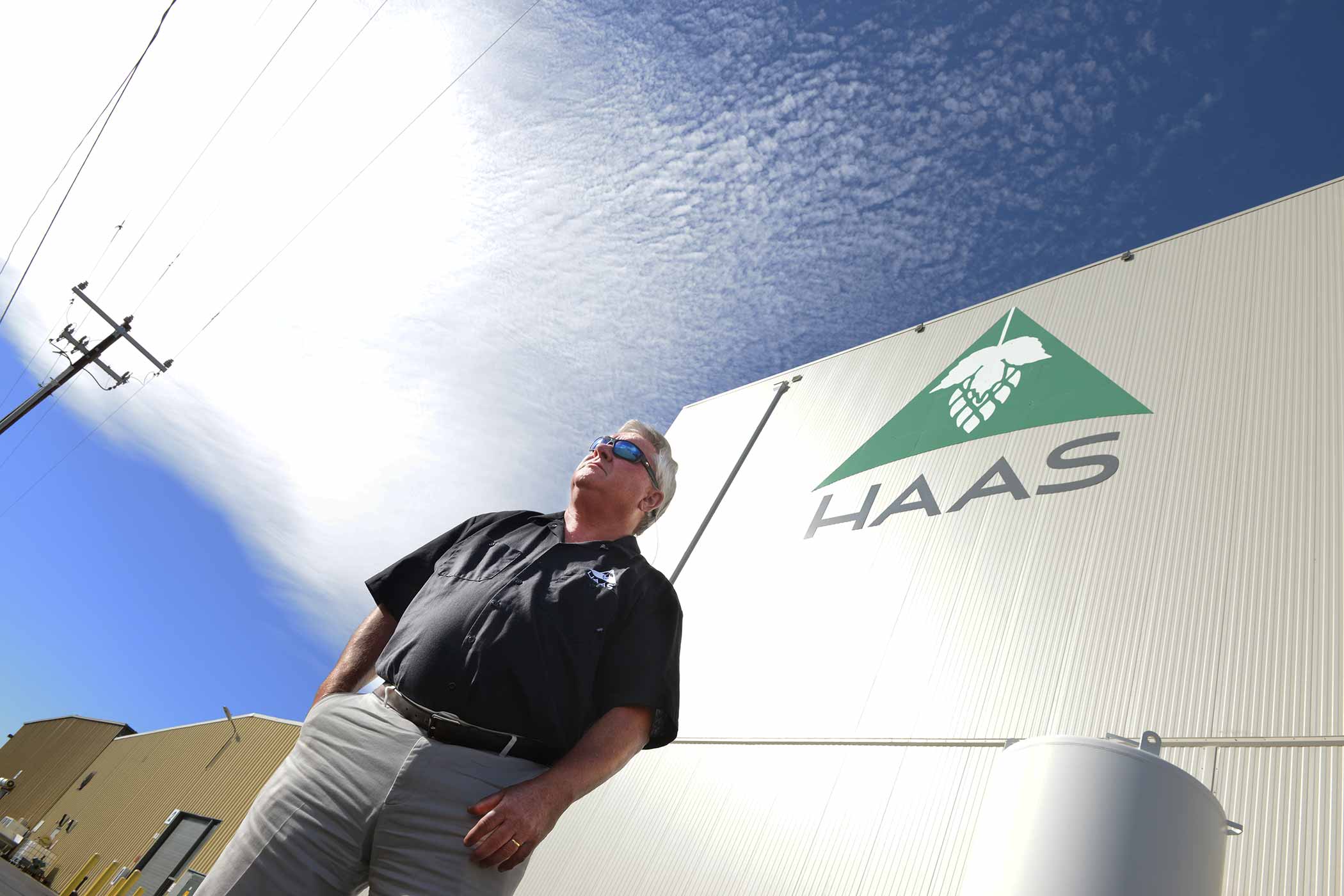Shop
Hop Central, HPA’s New State-of-the-Art Pelleting Facility, Goes Online for its First Harvest
The future of hops.
Like This? Read That...
Hop Products Australia (HPA), the largest hop grower in Australia, has officially launched Hop Central, a state-of-the-art pellet plant in Myrtleford, Victoria. The $20 million (AUD) project covers 22,000 square meters (236,806 square feet) with top-of-the-line equipment dedicated to pelleting and packaging HPA’s entire crop, doubling the grower’s current processing capacity.
In 2025, for its first full harvest, Hop Central pelletized and packaged hops from HPA’s Victorian and Tasmanian growing regions, totaling 566 hectares and 1,468 metric tons. The plant can process up to 50 tonnes of pellets per day, with HPA aiming to pelletize the entire crop of hops within 55 days, more than 35% faster than the 70 to 80 days it took at HPA’s two older plants.
With a goal to increase the quality, efficiency, and consistency of top hops like Galaxy®, Eclipse®, Vic Secret™, and more, HPA commissioned its exceptional facility for what newly appointed HPA CEO Owen Johnston calls “future proofing the business.”
Johnston, who recently replaced long-time CEO Tim Lord, says, “The most important benefit of the new pellet plant is how it satisfies our customers’ needs.”
He adds, “If we deliver exceptional quality and flavours that are so good they elicit emotional responses from our customers, that is the longevity of our business right there.”
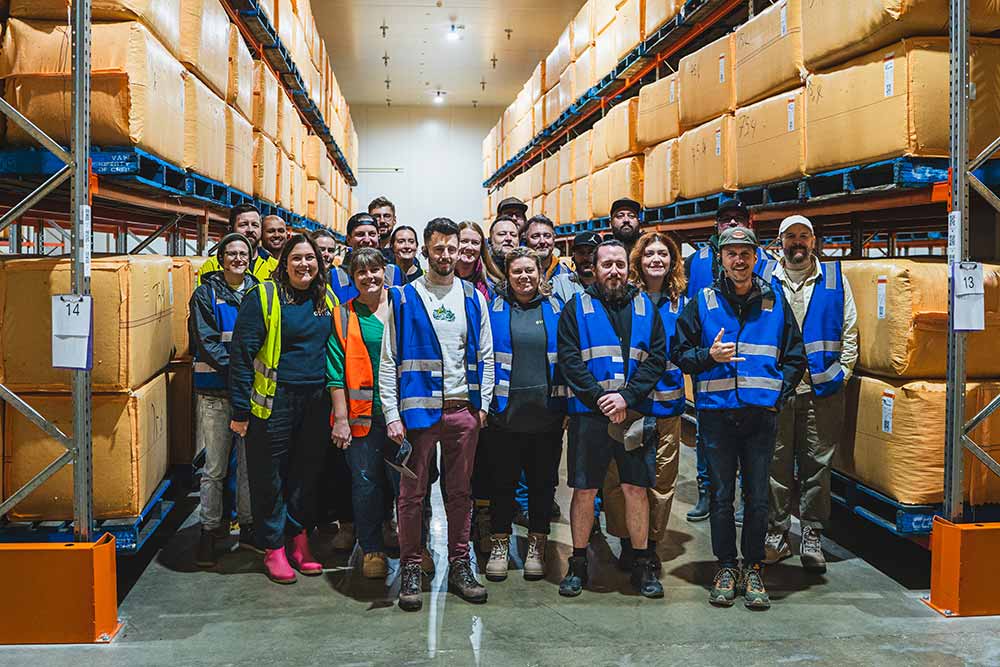
Photography courtesy of Magic Muncie | Hop Culture
Hop Culture, along with a group of twenty brewing industry veterans from around the world, had a chance to visit the shiny plant right before it went online during Australia’s recent hop harvest in March.
HPA’s Processing Facility Manager, Michael Monshing, who ran their older plants for the last five years, and HPA’s Quality and Compliance Manager, Katie Crane, led our group, allowing us to closely examine many of the updated, advanced equipment.
After spending several hours getting an up-close look at Hop Central, we can attest that the responses were pretty emotional.
“What do you think?” I asked Põhjala Head Brewer Martin Vahtra as we walked around. “It’s like a plane hangar,” he said to me in surprise, noting just how much space is available at the facility.
He wasn’t the only one impressed.
“It’s f**king awesome!” exclaimed Beamer Eisele, President and CEO of Modern Brewery in St. Louis, MO. “This makes me really excited for everything Galaxy and Aussie [hops] for the future.”
Which, as Johnston noted, is exactly the goal at Hop Central. This is the future of hop pelletizing and packaging.
Past Process, Present Plant, Future Business
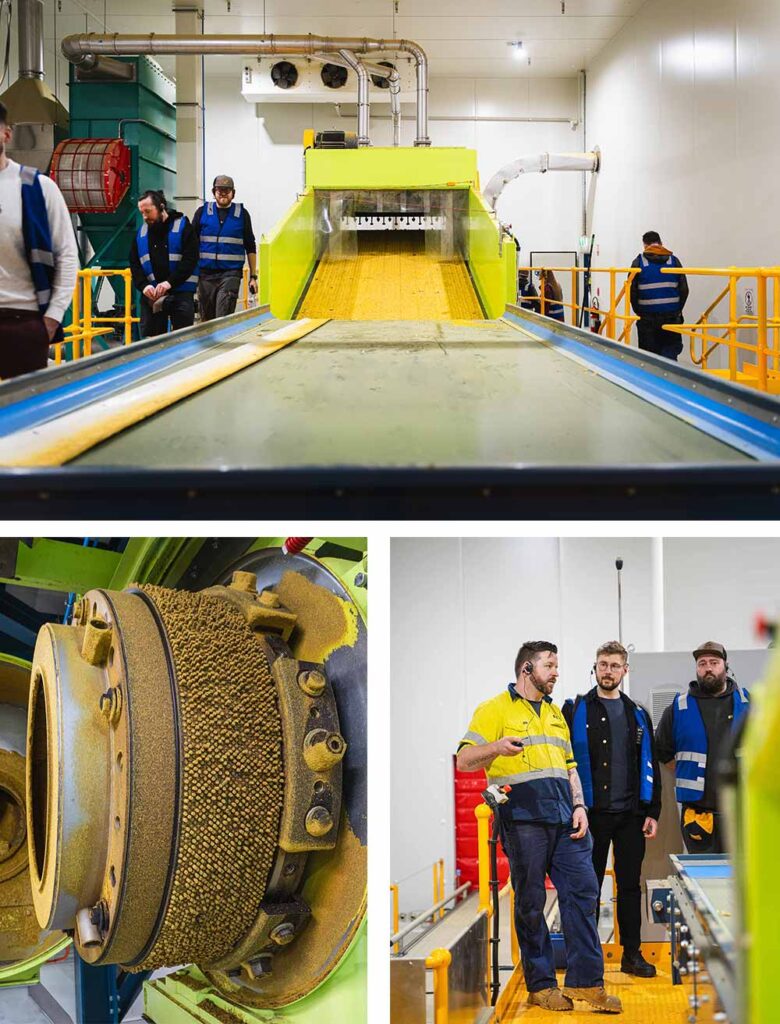
Photography courtesy of Magic Muncie | Hop Culture
This large-scale project started several years ago when HPA pinpointed a need to improve the market quality of some of their most popular hops, such as Galaxy.
“We identified a need to centralize processing so that we could have hops from all of our farms going into our pellet blends, from the beginning to the end of the season,” says HPA’s Chief Information Officer Nic Danger, “to improve the consistency of what we were delivering to our customers.”
Johnston admits, “We had a really old kit that was hard to use and breaking down,” he says. “We were using machinery from the 1960s to pelletize. We needed to reinvest for our own purposes. That’s not romantic; that’s very practical.”
For input, HPA tapped HAAS Director of Pellet Operations Brice Hiatt, who had recently overseen the construction of a new pelletizing line at HAAS’ facility in Yakima Valley.
“With my experience and what I’ve learned over twenty-seven years as Plant Manager and now the Director of Pellet Operations, I put that experience into the new [HAAS] line, so I was able to share that experience with HPA,” says Hiatt, quickly pointing out that, although he happily shared his expertise, the HPA team did all the heavy lifting.
Commissioning Hop Central, HPA had one clear goal in mind, according to Johnston: “Deliver the highest possible quality, with the lowest possible flavour variability, using a whole-crop approach to what we bring to market.”
When talking about the tentpoles for a project as large as Hop Central, Danger says their goals boiled down to two essential words: quality and consistency.
For all brewers, especially those with a core range, producing the same product repeatedly is key to their bottom line. With the changes made at Hop Central, “A brewer can have the confidence that whatever they pull out of the bag is going to deliver consistent performance in beer,” says Danger, “and it’s going to have the same impact as what they brewed with two months ago or two years ago.”
The Five New Advantages of HPA Hop Central
While designing and building Hop Central, HPA focused on five key strategic areas they identified as critical to improving hop quality, increasing efficiency, and ensuring consistency.
Increased Efficiency: Shifting From Manual to Automatic
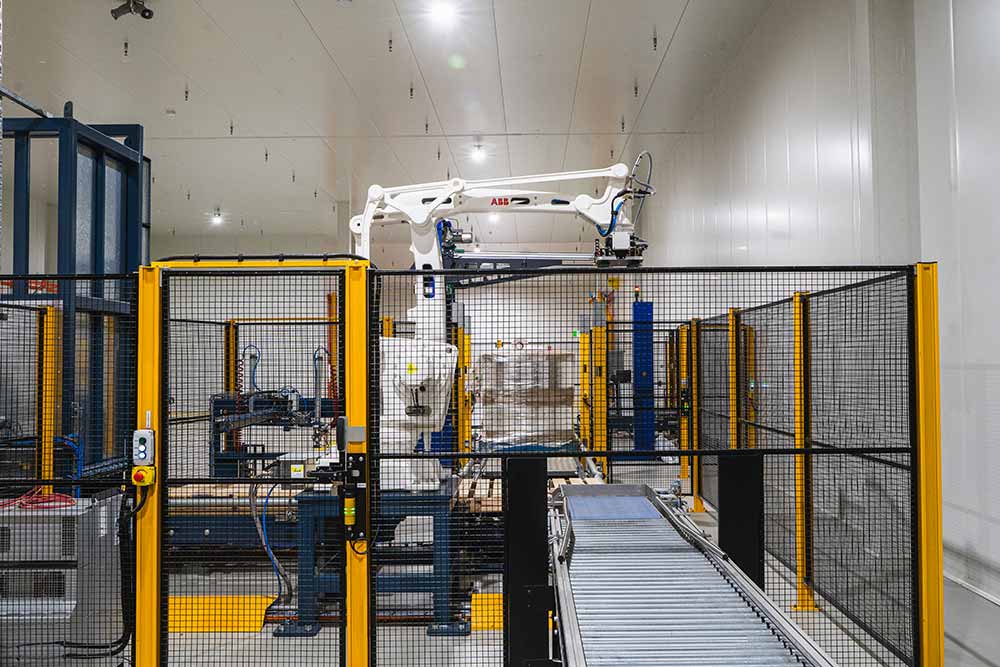
Photography courtesy of Magic Muncie | Hop Culture
One of the most significant benefits of Hop Central is the upgrade from manual labor to automatic machinery, allowing HPA to process a higher quantity of hops in less time.
“We can get our full crop through a lot quicker,” says Monshing, noting that HPA plans to process the 2025 harvest in about fifty-five days from start to finish. In past seasons, the older plants would package the entire crop in seventy to eighty days, according to HPA’s Marketing Manager, Grace Irwin.
Whereas the old plants could pelletize about 900 kilos of hops per hour, Hop Central aims to process 2,500 to 3,000 kilos in that same amount of time. “It’s quite a bit quicker,” says Monshing.
The key? Whereas HPA’s previous two pelletizing facilities required more manual labor, Hop Central is a highly streamlined, automated operation.
The efficiency at Hop Central is one of Monshing’s favorite parts of the entire operation. “Basically, once we cut the bale open, we don’t physically touch the hops from that point on,” he shares, noting that the state-of-the-art automatic plant only needs a team of around ten to run. “From here, it’s all machine until the customer opens the bag.”
Crane adds, “The bale breaker room is the last spot we touch the hop material.”
Cold Processing: Preserving Hop Integrity
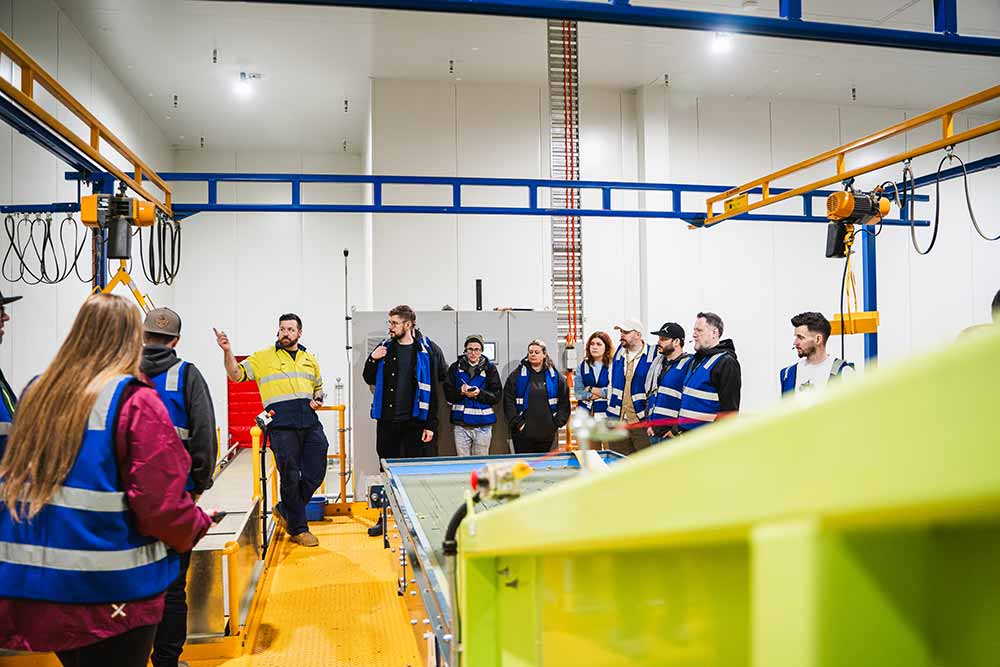
Photography courtesy of Magic Muncie | Hop Culture
Time, oxygen, and temperature are the three biggest enemies of hops. As soon as those little green cones are picked, all three threaten to degrade a hop’s quality.
At Hop Central, the hop bales stay in a one hundred percent cold-chain environment throughout the processing plant, preserving the flavours, aromas, and bitterness of all HPA’s popular hops, from Galaxy to Eclipse to Vic Secret and everything in between.
It’s a feature Hiatt praises, admitting, “They’re one step ahead of us [at HAAS] because they can control the temperature in the whole building.”
The temperature-controlled production rooms are a considerable upgrade from HPA’s older plants.
“In the past, everything was ambient,” Monshing explains. “[At Hop Central], the warmest environment the hops experience is 10°C (50°F).”
The consistently cool plant maintains a range of 2°C to 10°C (35.6°F to 50°F) throughout processing, keeping bales cold and ensuring hop integrity. “The hops are constantly in a cold environment,” says Monshing.
Danger adds, “Because we’re keeping the temperature lower, it reduces the potential for oxidation and reduces the loss of the terpenes that deliver hop impact in beer.”
The cold chain of command at Hop Central is integral to HPA’s goal of delivering consistent, high-quality hops.
Blending Capabilities = Consistency
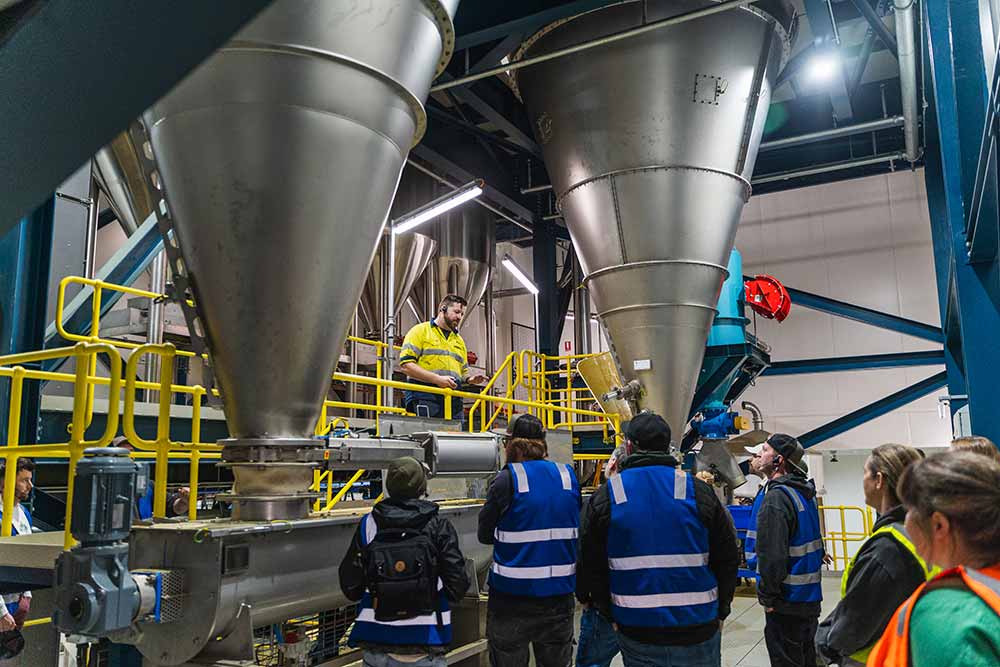
Photography courtesy of Magic Muncie | Hop Culture
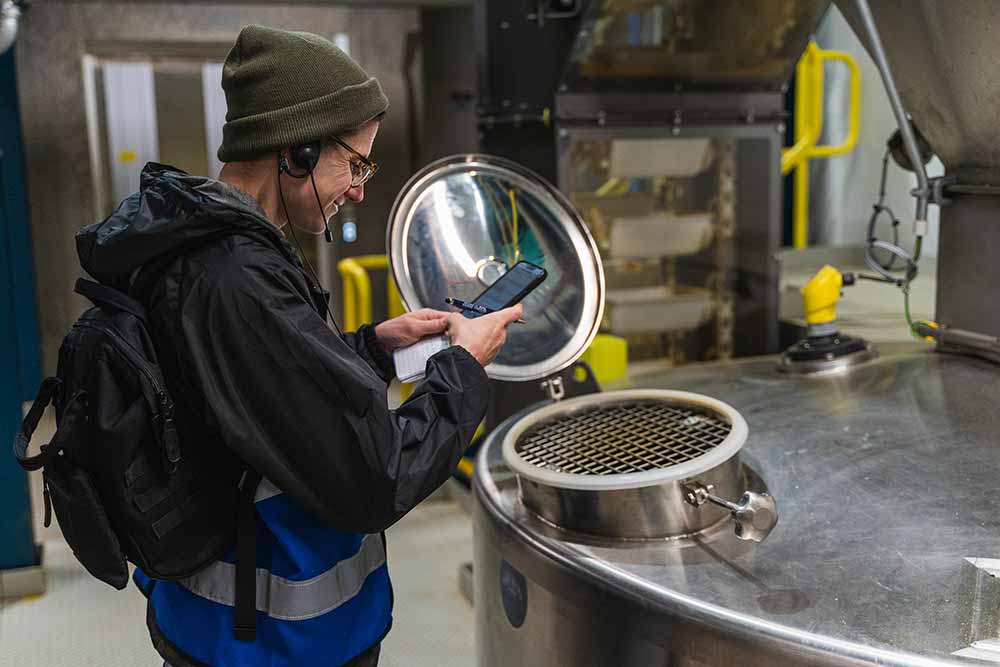
Photography courtesy of Magic Muncie | Hop Culture
Johnston calls HPA’s improved blending capabilities at Hop Central the “secret sauce.”
The process starts even before the hop bales hit the new pelletizing plant.
HPA has a lab on each farm at the bale press, where a technician will take a sample of every pallet of hops, performing near-infrared (NIR) analysis to determine the bale’s moisture, alpha, and oil content in real-time.
“By having data immediately available, we can decide whether or not that particular bale or pallet of hops should be used in a blend,” explains Danger.
Previously, Danger says it took HPA up to forty-eight hours to gather the same data from wet chemistry analysis. “That lead time meant there was potential for errors further up the supply chain before we pelleted those hops,” he says.
Now, however, before the hops even reach Hop Central, HPA knows what’s inside them. Once they arrive at the processing facility, the hop’s data can be accessed via a comprehensive dashboard, showing the inventory of every single bale produced at harvest, including what farm it came from, temperature checks, the alpha and oil content, and more. “I can watch what’s happening by the minute,” says Monshing.
With that information, Danger says they can determine whole crop averages for key measurements and create multiple blends within the lowest possible standard deviation for the entire crop. “We actually know what the alpha, oil, and moisture content will be for each lot that goes into the plant,” he elaborates. “When it comes out of the mixer, we can be absolutely certain that every single bag of pellets has the same analytical value as what went in.”
In addition to meticulous data analysis to ensure consistent blending, HPA made a significant investment in two high-performance conical screw mixers, industry-leading equipment known for creating a superior, consistent product. With a volume of 20,000 litres, each efficient mixer can hold approximately 3,000kg of hop power (~40 hop bales).
“They didn’t have that type of technology before,” explains Hiatt. “This equipment will homogenize the blends much more effectively and thoroughly.”
He adds, “[The new mixers] will give them a better quality pellet and run faster for them, of course.”
With two new mixing tanks, Hop Central can maximize efficiency by continuously pelleting— one mixer fills with ingredients while the other blends a batch of powder for pelletizing.
The two mixers help Hop Central power through approximately 3,000kg/hour (6613.8lbs/hr) or 60,000kg/day (132277.36lbs/day).
Johnston points out that great choices upstream—like understanding the raw material—give HPA immensely effective tools to get the highest possible quality, lowest possible flavour variance outcome, and the blending capability in line that “make us actually walk that talk.”
Upgraded Packaging: A Thousand Times Better
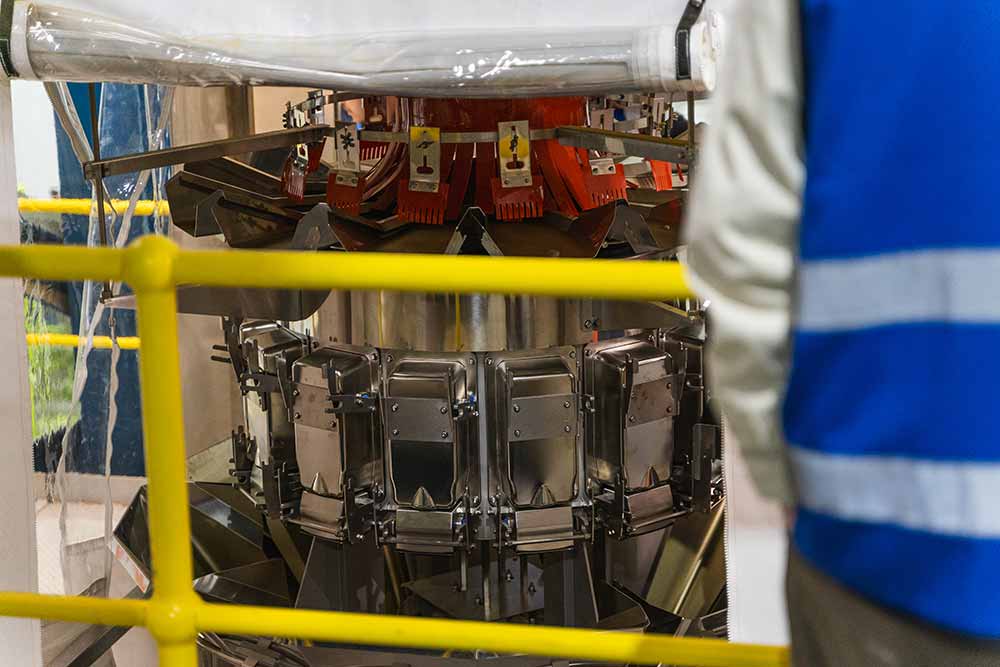
Photography courtesy of Magic Muncie | Hop Culture
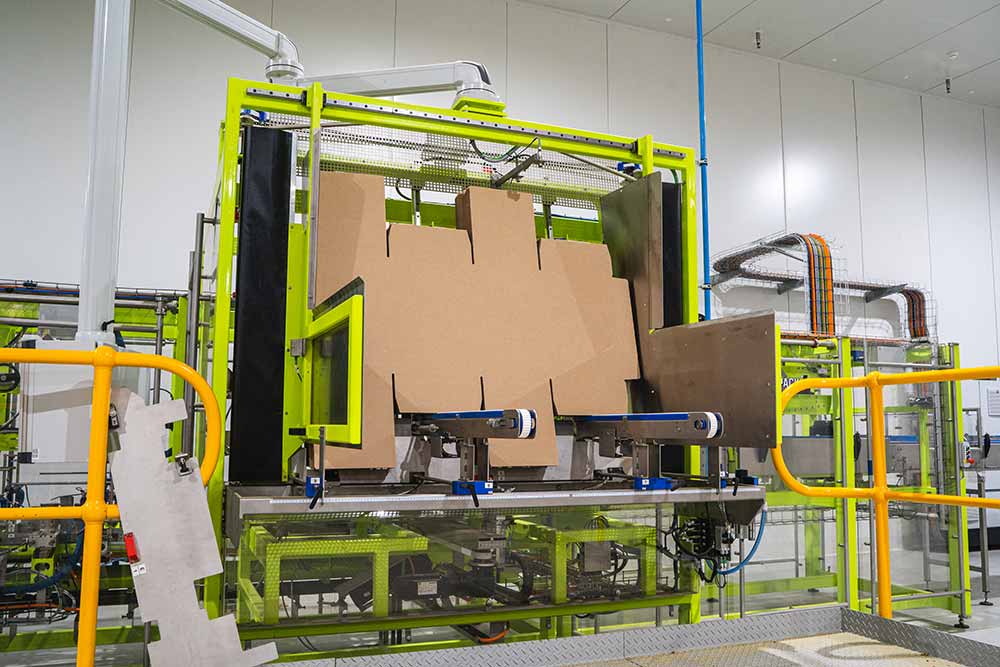
Photography courtesy of Magic Muncie | Hop Culture
One of the most significant upgrades at Hop Central has been the process for packaging hops, which has shifted from a manual to an automatic process.
Previously, Crane explained, all bagging was done manually by a person standing under the hopper while holding a bag. Pellets would go into a bag before being backflushed to remove oxygen. “When you’ve got humans running a process, and we had really good humans running these machines, 99.9 percent of the bags that went out were good, but there could be one mis-sealed or with a residual level of oxygen in the bag that was suboptimal,” Danger explains. ”We took this really seriously [at Hop Central] and thought: What’s the best system we can use?”
The answer? Automation designed to backflush hops into three-layer, oxygen-proof, and light-proof foil bags.
“There is no human interaction in the sealing process, so there is less chance of mishaps or errors,” says Monshing, noting machines also package everything into boxes, stack them on pallets, and wrap those pallets. “There’s less chance of things getting damaged, and every box comes out exactly the same.”
Again, those two words: quality and consistency.
Crane calls the updated packaging her “favorite improvement.”
The new Form Fill Seal machine is “not ten times better,” notes Johnston. “I’m talking a thousand times better.”
The Form Fill Seal machine ensures a better, more consistent seal on the bag that will keep residual oxygen very low to preserve hop aromas in storage.
Danger adds that they test each packed bag for dissolved oxygen (DO2). While he notes they used this practice at the old facilities, the new, automated equipment at Hop Central allows the team to test for a lower level of DO2, ensuring an even higher rate of consistency.
According to Danger, each bag of processed material aims for a DO2 level of less than two percent.
The improved shelf stability gives Johnston the confidence that HPA can send hops to the extremities of the supply chain while maintaining hop integrity. For example, if a brewer in America orders hops from HPA, they will travel in various vehicles through multiple distribution centers across the globe, and still perform well. “Hops will go to my mates in Austin, TX, and they will still get a seriously good bag of Galaxy,” exclaims Johnston, “even though it has gone from Hobart to Victoria to Yakima and down to Texas.”
A properly sealed bag without misalignment in the seams ensures “best-in-class control of the modified environment, so we’re talking about DO2 levels at two percent or less every time,” says Johnston, who confidently believes these machines will deliver. “This is game-changing for the brewer.”
Traceability = Accountability
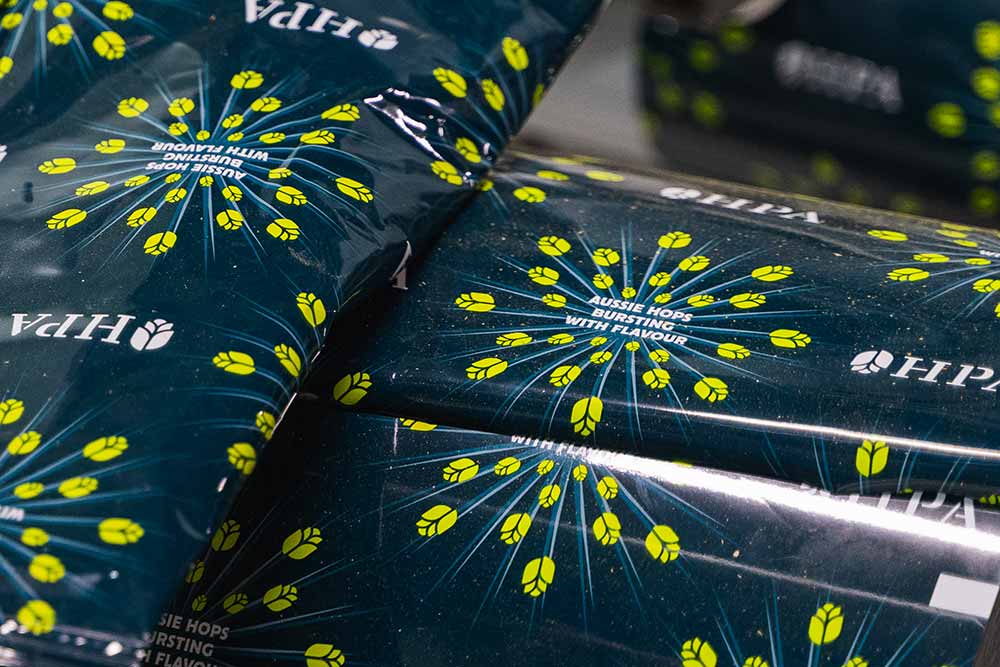
Photography courtesy of Magic Muncie | Hop Culture
“The number one thing for me is traceability,” says Danger, noting that with the improvements at Hop Central, HPA can trace a bale from the garden it was grown in all the way to the final package. “That’s great assurance because, over the years, that will help us identify opportunities to further improve our process.”
The future implications are two-fold.
First, if there are any outstanding high-performing hops from a particular harvest, HPA can trace that bale back to the field, asking, “Well, what happened in 2025 to produce such a great result for those pellets?” explains Danger.
On the other hand, Monshing says that if they encounter any problems with lots, the highly effective traceability will help HPA track the source, potentially finding a solution before it becomes a bigger hurdle.
“If there’s a problem in the system, at the start, or something we’ve done along the way, we’ll know exactly where it’s going on and what it is,” says Monshing.
But the accountability doesn’t just apply internally to HPA.
According to Crane, the lab at Hop Central will sample hops pretty much every hour they’re in production, twenty-four hours a day, as they move through the facility. The final analytical details will be printed on every bag of hops and carton label for brewers to see.
QR codes printed on each pack mean a customer can pick up their phone, scan the code, and get information on the alpha, oil, and moisture content of the hops inside “to be absolutely certain they’re getting premium quality hops to brew with, and plan their recipes accordingly,” says Danger.
The Beginning of a Bright Future
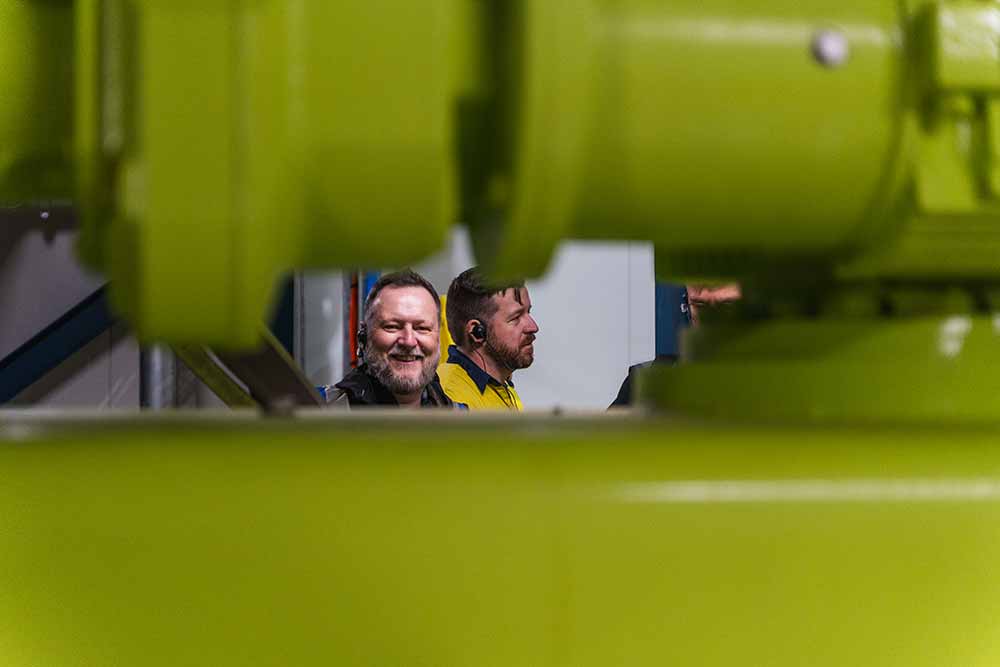
Photography courtesy of Magic Muncie | Hop Culture
After learning about all the new features of Hop Central, our group left the facility feeling excited and energized.
Eisele from Modern Brewery noted that while he’s always gotten excellent quality Galaxy hops, hearing stories from other brewers about lower quality Galaxy in the past can plant a bad seed in your head. “But coming out here and seeing [Hop Central] eliminates all of that,” he said. “[Hop Central] will allow HPA to dial everything in to the nth degree. They’ve obviously invested a lot of time and effort to build something to preserve the future.”
While Johnston stopped short of calling Hop Central a revolution, he did admit that “the revolution is in the impact that it’s going to have on our customers.”
HPA Hop Central has just gotten off the ground, but the future implications for the highest quality, most consistently performing Australian hops are sky high.
From what we’ve seen, after processing through Hop Central, you could probably send HPA’s hops to space and back and still have the greatest assurance they’ll be excellent.
Or as Johnston beams, “We want great Galaxy for everyone in the galaxy.”

